 |
 |
 |
| |
Nonclassic OIs and AIDS Cancers Occurring at Higher CD4 Counts in Swiss Cohort...... "AIDS Defining Opportunistic Diseases in the Swiss HIV Cohort Study: A Comprehensive Review 1988-2013"
|
| |
| |
15th European AIDS Conference, October 21-24, 2015, Barcelona
CD4 count at diagnosis of NHL and Kaposi sarcoma, another AIDS-defining cancer, climbed from about 50 in pre-ART times to above 300 in the recent-ART era. ...... nonclassic opportunistic diseases like bacterial pneumonia, pulmonary TB, and Candida esophagitis--as well as AIDS-defining cancers--now occur at higher CD4 counts.
Mark Mascolini
Incidence of AIDS-defining opportunistic diseases dropped dramatically in a 1988-2013 analysis of the Swiss HIV Cohort Study (SHCS) [1]. But nonclassic opportunistic infections (OIs), such as recurrent bacterial pneumonia, and AIDS cancers are occurring at higher CD4 counts in recent years.
The SHCS (www.shcs.ch) began collecting data on most HIV-positive people in Switzerland in 1988, not long after the epidemic began. The cohort now includes about 70% of all HIV-positive adults in the country. As in all countries that provide wide antiretroviral coverage, incidence and prognosis of AIDS-defining opportunistic diseases improved markedly over the years.
CD4 count provides a marker of immunodeficiency, the SHCS team noted, and certain opportunistic diseases occur below specific CD4 thresholds. They conducted this quarter-century analysis to determine how CD4 counts at opportunistic disease onset have changed, and to chart trends in incidence of opportunistic diseases and survival with these diseases. The Swiss researchers divided the analysis into three periods-pre-ART (1998-1995), early ART (1996-2003), and recent ART (2004-2013).
Over the whole study period (2.2 million person-years of follow-up), incidence of all opportunistic diseases measured 0.36 per 100 person-years, meaning 36 of every 10,000 people with HIV got diagnosed with an opportunistic disease every year. But that incidence swooned from 1.37 per 100 person-years in the pre-ART era, to 0.22 per 100 in the early ART era, all the way down to 0.07 per 100 in the modern ART era. In the pre-ART era, about 80% of people died within 2 years of an opportunistic disease diagnosis; in the modern-ART era, 80% survived 10 years after diagnosis.
Incidence of two OIs with established primary prophylaxis--Pneumocystis jiroveci pneumonia and Toxoplasma gondii encephalitis--sunk in a similar fashion from 1988 to 2013, while survival after diagnosis climbed. CD4 count at diagnosis of these 2 infections remained around 50 across the three ART periods. CD4 count at diagnosis of cytomegalovirus (CMV) infection rose gradually over the study period but still lay around 50 in the recent ART era.
CD4 count at diagnosis of disseminated non-TB mycobacterial infection climbed from well below 50 to about 50 across the years, while CD4 count at diagnosis of progressive multifocal leukoencephalopathy jumped from about 50 to about 100. Incidence of recurrent bacterial pneumonia nosedived starting around 1995, while CD4 count at diagnosis of bacterial pneumonia rose from about 50 in pre-ART days to about 400 in the recent-ART era. CD4 count at diagnosis of Candida esophagitis climbed from about 50 to about 200 over the years, while CD4 count at diagnosis of pulmonary TB inched up from about 100 in the pre-ART era. None of these changes in CD4 count at diagnosis reached statistical significance.
Incidence of non-Hodgkin lymphoma (NHL) peaked around 0.7 per 100 person-years in 1995, fell to a plateau of 0.2 per 100 person-years from about 2000 to 2008, then dwindled further to about 0.1 per 100 person-years in 2013. CD4 count at diagnosis of NHL and Kaposi sarcoma, another AIDS-defining cancer, climbed from about 50 in pre-ART times to above 300 in the recent-ART era.
The SHCS team concluded that incidence and mortality of all AIDS-defining opportunistic diseases continue to wane, reflecting improvement in opportunistic disease prophylaxis, treatment, and antiretroviral therapy. But they cautioned that all AIDS-defining opportunistic diseases are not equal. In particular, nonclassic opportunistic diseases like bacterial pneumonia, pulmonary TB, and Candida esophagitis--as well as AIDS-defining cancers--now occur at higher CD4 counts.
Reference
1. Gisler V, Kraus D, Weber R, et al. AIDS defining opportunistic diseases in the Swiss HIV Cohort Study: a comprehensive review 1988-2013. 15th European AIDS Conference, October 21-24, 2015, Barcelona. Abstract PS5/2.
-----------------------
Reported by Jules Levin
AIDS Defining Opportunistic Diseases in the Swiss HIV Cohort Study:
A Comprehensive Review 1988-2013
Gisler, Valentin1; Kraus, David1; Weber, Rainer2; Calmy, Alexandra3; Cavassini, Matthias4; Elzi, Luigia5; Schmid, Patrick6; Bernasconi, Enos7; Furrer, Hansjakob1 and the Swiss HIV Cohort Study University and Cantonal Hospitals of 1Bern, 2Zurich, 3Geneva, 4Lausanne, 5Basel, 6St Gall, 7Lugano; Switzerland
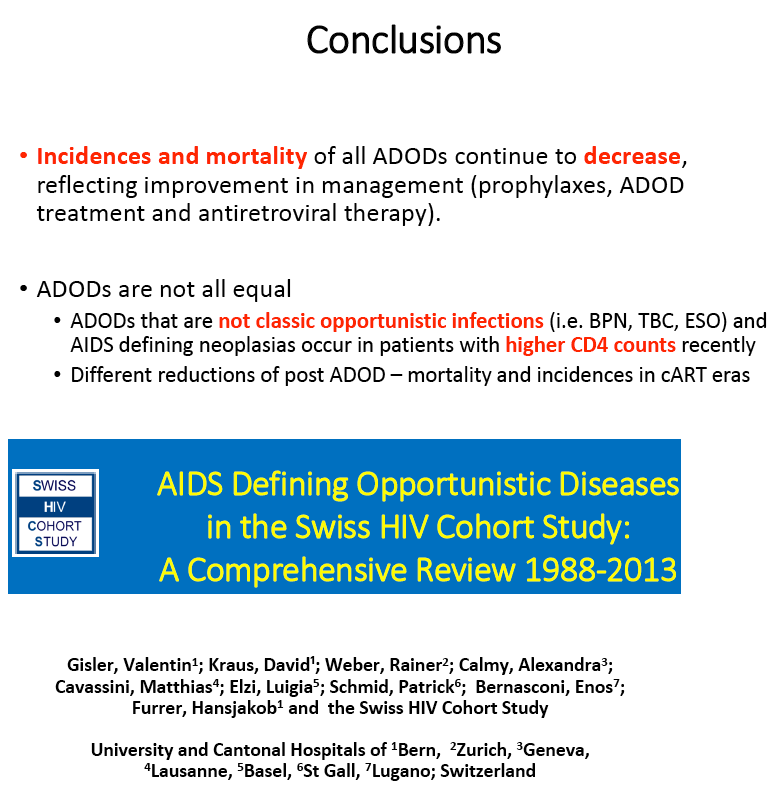
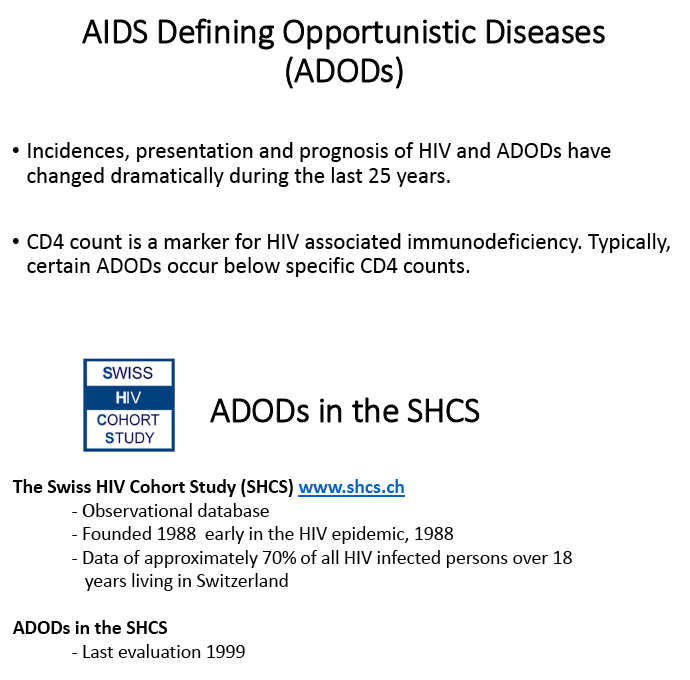
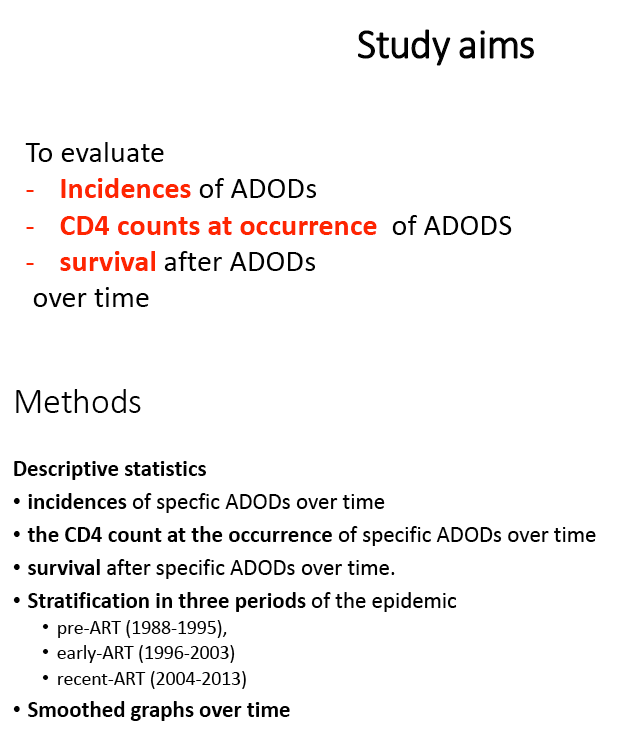

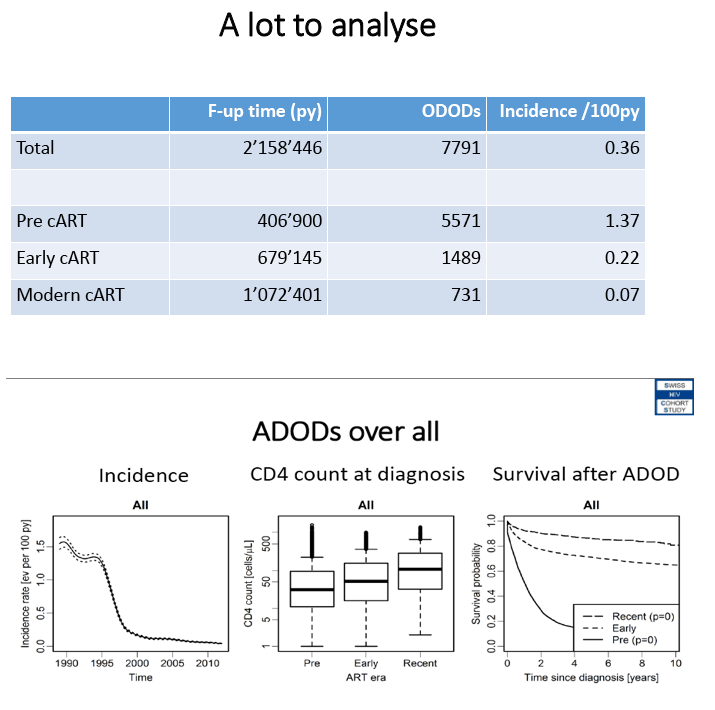
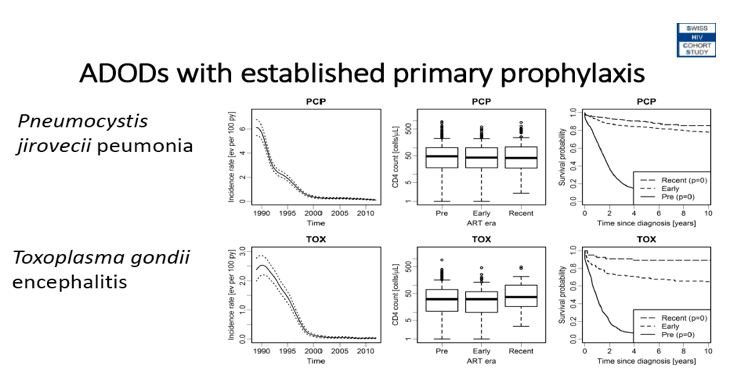
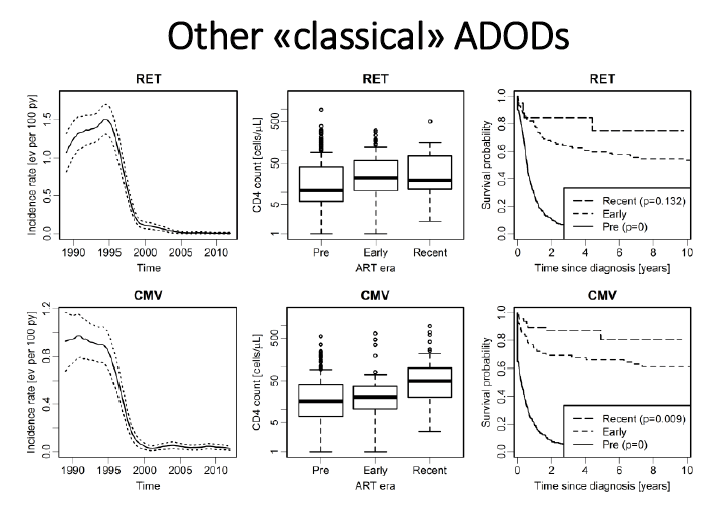
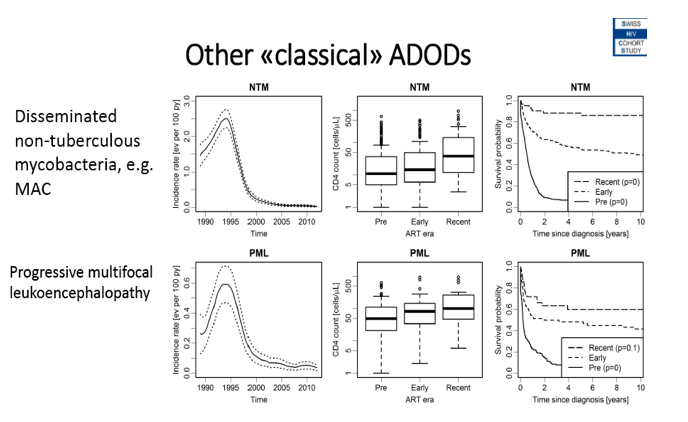

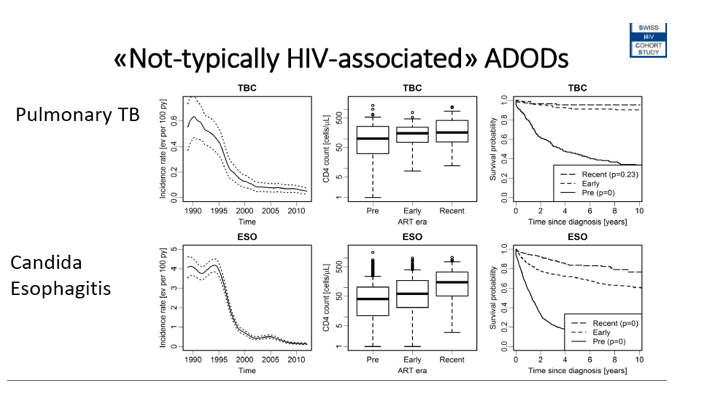
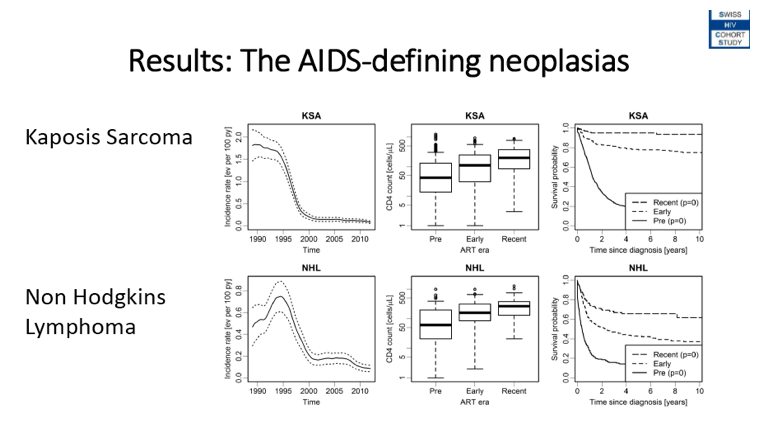
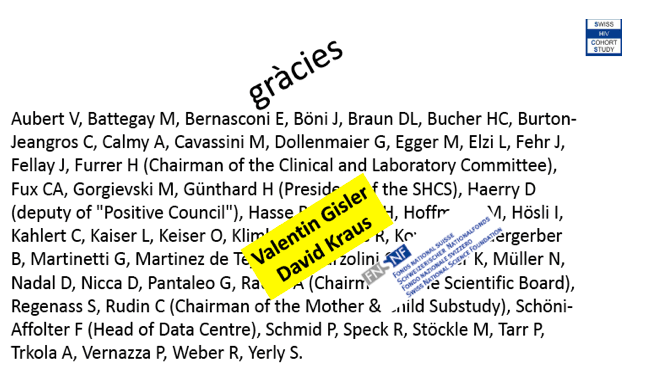
|
| |
|
 |
 |
|
|